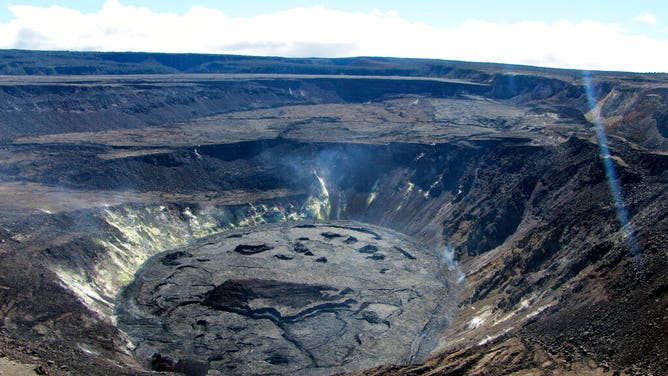Earthquake swarm at Hawaii’s Kilauea volcano detected by scientists
Small earthquakes are continuing at a rate of at least 10 detected quakes per hour

This Aug. 13, 2021, photograph provided by the U.S. Geological Survey shows the crater of Kilauea volcano on Hawaii's Big Island in Hawaii National Park, Hawaii.
(Drew Downs/U.S. Geological Survey via AP)
A swarm of earthquakes at Hawaii’s Kilauea volcano was detected by geologists Tuesday, though the volcano is not currently erupting.
The Hawaiian Volcano Observatory said the earthquakes began Monday evening and continued into Tuesday morning. A particularly strong sequence of quakes occurred around 1:30 a.m. Hawaiian time.
More than 140 earthquakes had been recorded as of 4:30 a.m. Hawaiian time on Tuesday. The largest recorded quake was magnitude 3.3, with the majority of them less than magnitude 1. Small earthquakes are continuing at a rate of at least 10 detected quakes per hour, the observatory said.
The onset of the earthquake swarm coincided with a change in the ground surface of the volcano, potentially indicating the shallow movement of magma beneath the south part of Kilauea's caldera.
However, webcams and satellite imagery show no evidence of lava at the surface.
The observatory raised its volcano alert level for Kilauea from an advisory to a watch due to the earthquake activity in the south caldera region. This means the volcano is showing heightened or escalating unrest, with an increased potential for an eruption.
According to the United States Geological Survey, Kilauea has erupted 34 times since 1952, making it one of the world's most active volcanoes.
In 2018, an eruption of Kilauea destroyed more than 700 homes when large lava flows surged through volcanic vents in a residential neighborhood of the Puna District during the final year of an eruption that lasted more than three decades, according to the National Park Service.
Kilauea is 212 miles south of Honolulu, on the Big Island of Hawaii.